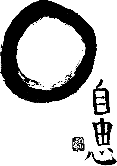 |
|
 |
|
|
|
Most of us have heard or taken part in discussions about whether it is better to talk about budo as we teach and learn. Some "experts" say it is not good to describe technique and fill students' heads with "conceptual knowledge" instead of experiential knowledge. Then there are other "experts" who say the opposite. Who is right? Is anyone "right?" There are traditionalists who do not want to do anything different than O-Sensei or whoever else is on the aikido pedestal at any given time. There are those who do their best to do the opposite just because they are rebels and want to be "original." This sort of polarized thinking is always limiting. As in most things, I think the answer lies in a little of this and a little of that…so that the eventual blend is appropriate to produce the desired result. Here is my take on the subject. I welcome input from others on this subject as we are all searching for efficient ways to educate each other and ourselves. The goal is to help students acquire a basic "picture" of how aikido works and give them an educational curriculum which contains the fundamental tools necessary to learn and practice budo. If their inner picture is of some "powerful expert" (no matter where the power comes from or how it is described) that can throw people through the air and cause excruciating pain at will, then they will try to practice that way. If students are shown and told that proper posture, movement, timing, distance and understanding of principal leads to gentle, but powerful technique, then they will practice that way. Many teachers only teach their own favorite variations that work well for them. This does not produce well-rounded students who eventually develop their own aikido. The curriculum must also contain continuing levels of experience, which raise us to the place we all can see in our great master teachers' practice. The methodology I try to use to get the basic tools is based on the idea that we learn best when we use a combination of all our senses. 1.Visual 2. Auditory 3. Kinesthetic Some of us are dominant in one area and learn best when that is favored. I think a good teacher can "feel" how each individual student learns and will make sure that happens. Essentially, we must demonstrate the whole, then break it down into parts and practice, then put it back together again into the whole and more practice. (The Whole-Part-Whole method) This is an ongoing process. We will develop the basic tools that will enable us to experience and deepen our practice using all of our senses. Instructors and teachers must also understand that a student who learns better from "feeling the technique", for example, can be educated and expanded by using methods which cause the student to work hard, endure and pass through frustration, forging them into much more than we thought possible. Getting students to "perform" what appears to be good physical budo technique is not the goal. There is much more to our practice and I will leave with all of us wondering (and wandering) how to eventually end up where we want to go. We must look to our teachers and keep the memory of their teachers alive in our practice. We can not just become as good as our teachers; we must become better than our teachers in order to pass on the full measure of what they have left us. |